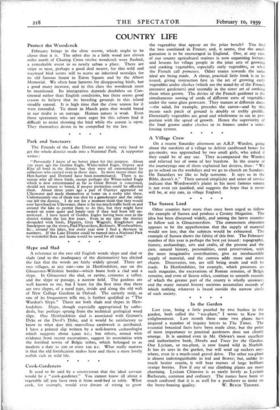Slype and Slad A reference to the two old English
words slype and slad or slade (and to the inadequacy of the dictionaries) has elicited the fact that the words are fairly widely spread. There are two villages, at any rate—one in Hertfordshire, one on the Gloucester-Wiltshire border—which boast both a :lad and a slype. In Gloucester the slad, or ravine, connotes a valley, and the slype or passage, a narrow field. The gardens are well known to me, but I learn for the first time that there are two slypcs, of a rural type, inside and along the old wait of New College Gardens in Oxford. The easterly strip, as one of its frequenters tells me, is further qualified as "The Warden's Slype." There are both slads and slypes in Hert- fordshire. Slype, though especially appropriated by cathe- drals, has perhaps sprung from the technical geological word slipe. One Hertfordshire slad is associated with Grimm's Dyke or the Devil's Dyke, and it would be satisfactory to know to what date this marvellous earthwork is attributed. I have a printed slip written by a well-known k,rchaeologist which suggests about zoo° B.C.; but others, armed with evidence from recent excavations, suggest its association with the fortified towns of Belgic tribes, which belonged to as modern a date as 200 or even too B.C. What really matters is that the old fortification makes here and there a most lovely nullah rich in wild life.














































 Previous page
Previous page